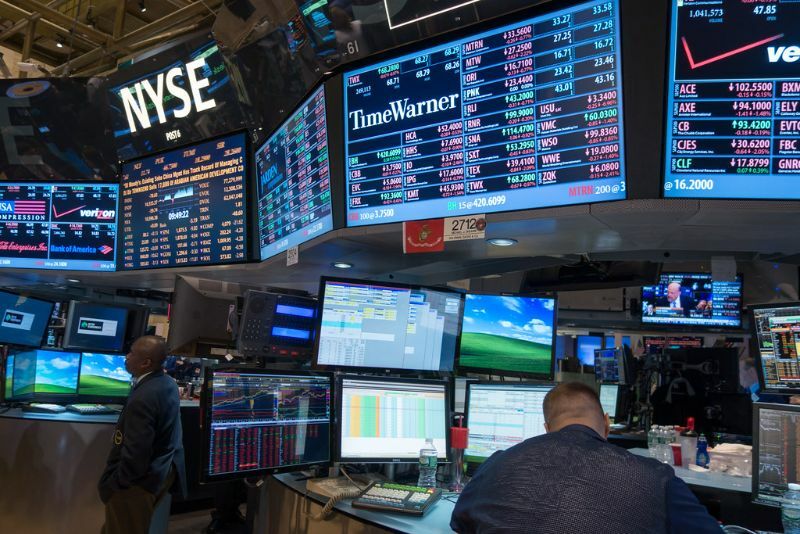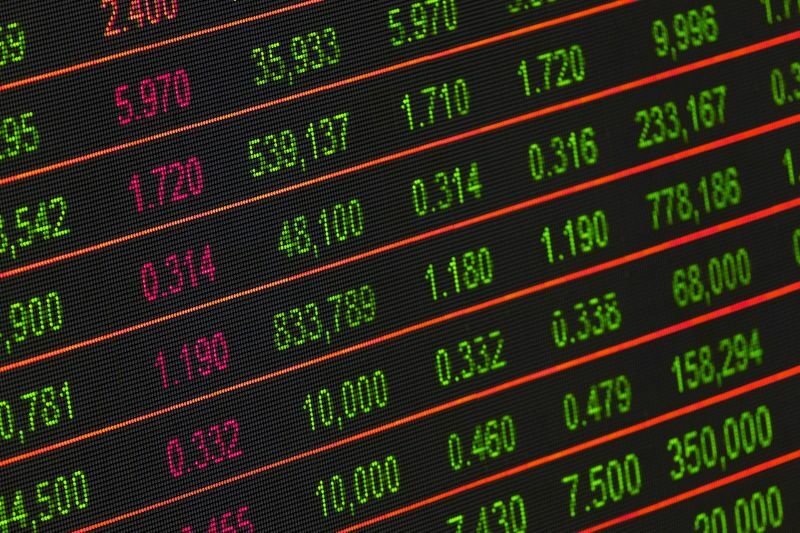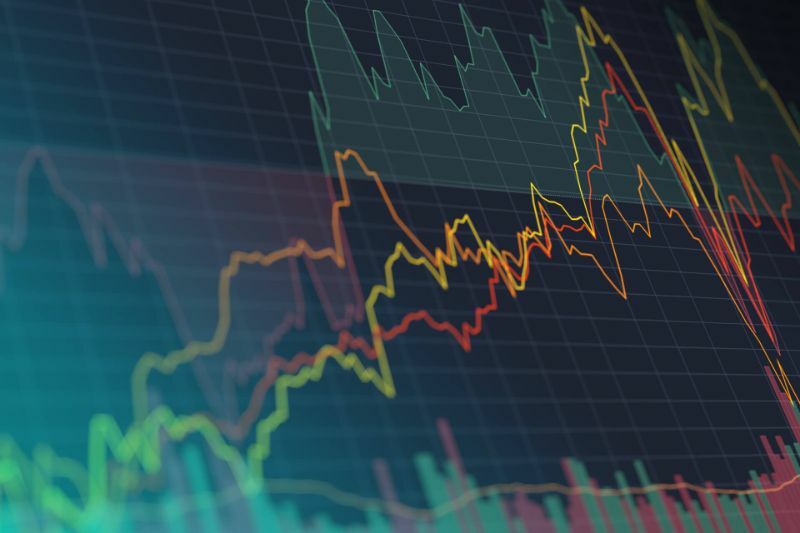In contrast to the “active” management that conventional mutual funds provide at substantially greater costs, ETFs practice “passive” fund management. Traditional ETFs continue to use passive management, following the index sponsor’s lead (for example, Standard & Poors). Stock index sponsors modify the equities that make up the index from time to time, although usually only when the market weighting of the stocks changes. They don’t try to pick and choose which stocks they believe have the best chances of succeeding.
This classic, passive approach also results in minimal turnover, which lowers trading fees for your ETF investment.
When comparing dividend vs. index investment, industry characteristics are critical.
We look for Canadian dividend stocks that are well-known, if not dominant, in their respective industries. Apart from brand recognition, we believe that huge corporations may sway laws and industry trends to their advantage. That is something that small businesses cannot do.
Dividend-paying stocks in Canada contribute significantly to your long-term returns, and dividend-paying companies are less risky than non-dividend-paying equities. As a result, the majority of your stocks should always pay dividends. To reduce risk and improve the stability of your investment returns as you become older and closer to retirement, you should increase the number of dividend-paying companies in your portfolio.
Dividend investing vs. index investing: Dividend-paying stocks might be among your finest buys.
We’ve always placed a high emphasis on a dividend history, primarily because it gives stocks we suggest a pedigree. After all, you can’t falsify a dividend record. For a corporation to have the resources and the commitment to declare and pay a dividend every year for five or ten years, it takes a lot of success and high-quality management. You can’t just make it up on the spur of the moment.
If you stick to high-quality, high-dividend-paying stocks, your income can account for a considerable portion of your total return—as much as a third of your profits. At the same time, dividends are a more reliable source of investment income than capital gains.
There are dividend-paying ETFs, which is vital to remember when comparing dividend vs index investment.
In general, we advocate investing in dividend-paying ETFs that hold firms with a track record of long-term success and dividends. These firms are the most likely to continue paying and raising dividends.
- When investing in international dividend ETFs, keep in mind the economic stability of the country. It’s also worth noting that foreign authorities aren’t always on your side when it comes to enacting laws that affects your investments.
- Determine the dividend ETF’s volatility by determining its breadth. The broader the ETF, the lower the volatility. A sector-based ETF, such as one that follows resource equities, could be riskier.
- Understand the current financial health of each ETF business. These indicators are suggestive of equities that will continue to pay a dividend if they are doing well, have done so regularly, and show signs of growth.
DRIPs, or dividend reinvestment plans, are arrangements that allow shareholders to receive extra shares instead of cash dividends. DRIPs eliminate the need for brokers, saving shareholders money on commissions.
DRIPs also remove the annoyance factor associated with receiving tiny cash dividend payments. Second, some DRIPs allow you to reinvest your dividends at a 5% discount to current prices in more shares. Third, many DRIPs offer commission-free share purchases on a monthly or quarterly basis as an alternative.
Before participating in a DRIP, investors must typically possess and register at least one share. The cost of registration is usually between $40 and $50 per company. After that, the investor must notify the corporation that they want to participate in the DRIP.
A very high dividend yield can be a warning indication. Have you ever gone for a large dividend before, and if so, what prompted you to do so?
What factors would you consider when deciding whether to invest in an index fund or dividend stocks?
Is it good to invest in dividend ETFs?
Dividend-paying exchange-traded funds (ETFs) are becoming increasingly popular, particularly among investors seeking high yields and greater portfolio stability. Most ETFs, like stocks and many mutual funds, pay dividends quarterly—every three months. There are, however, ETFs that promise monthly dividend yields.
Monthly dividends are more convenient for managing cash flows and provide a predictable income stream for planning. Furthermore, if the monthly dividends are reinvested, these products provide higher overall returns.
Is it better to buy stocks with dividends?
Dividend-paying stocks allow investors to get paid even when the market is volatile and capital gains are difficult to come by. They are a good inflation hedge, especially when they expand over time. Unlike other sources of income, such as interest on fixed-income investments, they are tax-advantaged.
Do ETFs perform better than stocks?
Consider the risk as well as the potential return when determining whether to invest in stocks or an ETF. When there is a broad dispersion of returns from the mean, stock-picking has an advantage over ETFs. And, with stock-picking, you can use your understanding of the industry or the stock to gain an advantage.
In two cases, ETFs have an edge over stocks. First, an ETF may be the best option when the return from equities in the sector has a tight dispersion around the mean. Second, if you can’t obtain an advantage through company knowledge, an ETF is the greatest option.
To grasp the core investment fundamentals, whether you’re picking equities or an ETF, you need to stay current on the sector or the stock. You don’t want all of your hard work to be undone as time goes on. While it’s critical to conduct research before selecting a stock or ETF, it’s equally critical to conduct research and select the broker that best matches your needs.
Can I live off of dividends?
The most important thing to most investors is a secure retirement. Many people’s assets are put into accounts that are only for that reason. Living off your money once you retire, on the other hand, might be just as difficult as investing for a decent retirement.
The majority of withdrawal strategies require a combination of bond interest income and stock sales to satisfy the remaining balance. This is why the renowned four-percent rule in personal finance persists. The four-percent rule aims to provide a continuous inflow of income to retirees while also maintaining a sufficient account balance to continue for many years. What if there was a method to extract 4% or more out of your portfolio each year without selling shares and lowering your principal?
Investing in dividend-paying equities, mutual funds, and exchange-traded funds is one strategy to boost your retirement income (ETFs). Dividend payments produce cash flow that might complement your Social Security and pension income over time. It may even give all of the funds necessary to sustain your pre-retirement lifestyle. If you plan ahead, it is feasible to survive off dividends.
Do you pay taxes on ETF dividends?
ETF dividends are taxed based on the length of time the investor has owned the ETF. The payout is deemed a “qualified dividend” if the investor held the fund for more than 60 days before the dividend was paid, and it is taxed at a rate ranging from 0% to 20%, depending on the investor’s income tax rate.
Do ETFs pay dividends Vanguard?
The majority of Vanguard exchange-traded funds (ETFs) pay dividends on a quarterly or annual basis. Vanguard ETFs focus on a single sector of the stock market or the fixed-income market.
Vanguard fund investments in equities or bonds generally yield dividends or interest, which Vanguard distributes as dividends to its shareholders in order to maintain its investment company tax status.
Vanguard offers approximately 70 distinct exchange-traded funds (ETFs) that specialize in specific sectors, market size, international stocks, and government and corporate bonds of various durations and risk levels. Morningstar, Inc. gives the majority of Vanguard ETFs a four-star rating, with some funds receiving five or three stars.
How much do I need to invest to make $1000 a month in dividends?
To earn $1000 in dividends per month, you’ll need to invest between $342,857 and $480,000, with a typical portfolio of $400,000. The exact amount of money you’ll need to invest to get a $1000 monthly dividend income is determined by the stocks’ dividend yield.
It’s your return on investment in terms of the dividends you get for your investment. Divide the annual dividend paid per share by the current share price to get the dividend yield. You get Y percent of your money back in dividends for the money you put in.
Before you start looking for greater yields to speed up the process, keep in mind that the typical advice for “normal” equities is yields of 2.5 percent to 3.5 percent.
Of course, this baseline was set before the global scenario in 2020, so the range may shift as the markets continue to fluctuate. It also assumes that you’re prepared to begin investing in the market while it’s volatile.
Let’s keep things simple in this example by aiming for a 3% dividend yield and focusing on quarterly stock payments.
Most dividend-paying equities do so four times a year. You’ll need at least three different stocks to span the entire year.
If each payment is $1,000, you’ll need to buy enough shares in each company to earn $4,000 every year.
Divide $4,000 by 3% to get an estimate of how much you’ll need to invest per stock, which equals $133,333. Then multiply that by three to get a portfolio worth about $400,000. It’s not a little sum, especially if you’re starting from the ground up.
Before you start looking for higher dividend yield stocks as a shortcut…
You may believe that by hunting for greater dividend yield stocks, you can speed up the process and lower your investment. That may be true in theory, but equities with dividend yields of more than 3.5 percent are often thought to be riskier.
Higher dividend rates, under “normal” marketing conditions, indicate that the company may have a problem. The dividend yield is increased by lowering the share price.
Look at the stock discussion on a site like SeekingAlpha to see whether the dividend is in danger of being slashed. While everyone has an opinion, be sure you’re a knowledgeable investor before deciding to accept the risk.
When the dividend is reduced, the stock price usually drops even more. As a result, both dividend income and portfolio value are lost. That’s not to suggest it happens every time, so it’s up to you to decide how much danger you’re willing to take.
Can you lose money on dividend stocks?
Investing in dividend stocks entails certain risk, as does investing in any other sort of stock. You can lose money with dividend stocks in one of the following ways:
The price of a stock can fall. Whether or not the corporation distributes dividends has no bearing on this circumstance. The worst-case scenario is that the company goes bankrupt before you can sell your stock.
Companies have the ability to reduce or eliminate dividend payments at any moment. Companies are not compelled by law to pay dividends or increase their payouts. Unlike bonds, where a company’s failure to pay interest might result in default, a company’s dividend can be decreased or eliminated at any time. If you rely on a stock to pay dividends, a dividend reduction or cancellation may appear to be a loss.
Inflation has the potential to eat into your savings. Your investment capital will lose purchasing power if you do not invest it or if you invest in something that does not keep up with inflation. Every dollar you scrimped and saved at work is now worth less due to inflation (but not worthless).
The possible profit is proportionate to the potential risk. Putting your money in an FDIC-insured bank that pays a higher-than-inflation interest rate is safe (at least for the first $100,000 that the FDIC insures), but it won’t make you wealthy. Taking a chance on a high-growth company, on the other hand, can pay off handsomely in a short period of time, but it’s also a high-risk venture.
How long do I need to hold a stock to get dividend?
To put it another way, you just need to own a stock for two business days to receive a dividend. Technically, you could acquire a stock with one second remaining before the market closes and still be eligible for the dividend two business days later. Purchasing a stock just for the sake of receiving a dividend, on the other hand, can be pricey. To fully comprehend the process, you must first comprehend the words ex-dividend date, record date, and payout date.







